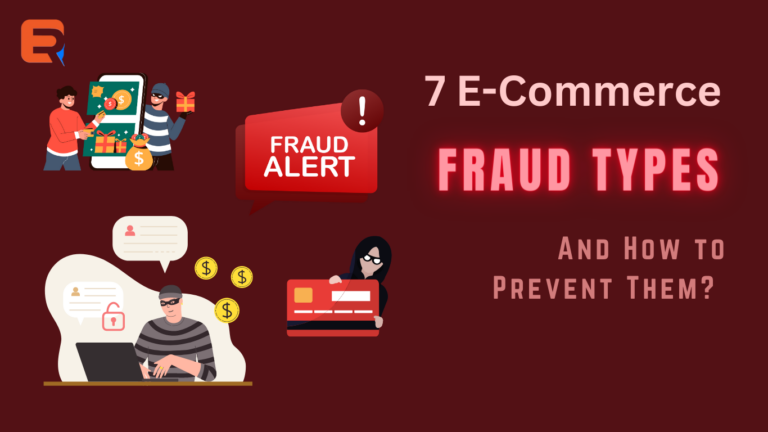As an e-commerce vendor, you and your staff must balance a variety of duties, including product procurement, quality assurance, customer support, SEO, and human resources. Fraud prevention is one of the duties that is frequently disregarded until it is far too late and highly expensive.
Your internet shop serves as the foundation of your business, whether you offer socks, cameras, or yachts. Customers must be able to browse the website, inspect the goods and services, add what they want to their cart, and, of course, confirm by paying for the purchases.
However, it is equally crucial that the company be safeguarded throughout the client’s stay by getting paid for the goods and services they are offering. Although the security and assurance of this transaction fall short of what internet company owners would like.
When a criminal uses stolen or fraudulent credit card information to manipulate the transaction process and gain a product or money from an online retailer, this is known as e-commerce fraud. It is just a basic example. Here are 7 e-commerce frauds you need to know right now –
1. The Classic Fraud
Unsophisticated scammers typically commit this kind of fraud. To recover the stolen products, goods are delivered to re-shippers after stolen credit card details are acquired on the dark web. Internet proxies are frequently used to conceal the foreign IP from which the majority of this kind of scam originates. It is advised to exercise particular vigilance while identifying this kind of scammer.
2. The Chargeback Fraud
When a person makes an online purchase of a good or service and then asks the payment processor for a chargeback because they believe the transaction was fraudulent, this is referred to as friendly fraud (also known as chargeback fraud). The bank or credit card companies reimburse the consumer for the transaction amount, which is still the retailer’s responsibility to pay.
In a chargeback scam, a person makes allegations that seem honest and convincing, and in certain situations, that person may be correct. Nevertheless, friendly deception may be employed to obtain goods for nothing. For instance, a fraudster could buy something from your online store and claim that it was never delivered, they could tell the company that manages their credit cards that they handed back the item but never received a refund, or they could even claim that they cancelled the order but it was still delivered to them.
3. Account Obtaining Fraud
When a fraudster acquires a user’s saved banking information on an online retailer, they commit account takeover fraud. If a fraudster obtains the user’s passwords or other private details, they can access the account information and use it to make transactions or withdraw money.
4. Fraudulent Interception
Fraudsters will construct orders with matching shipping and billing addresses for the cards they use. Any of the following methods might be used to intercept the package by them:
• Requesting a customer care agent to modify the order’s shipping address before it is sent.
• Contact the shipper to have the shipment sent to a location where the stolen goods can be recovered.
5. The Triangulation Fraud
Three distinct sorts of players are needed for triangulation fraud: the fraudster, a customer, and an online retailer. The con artist opens a storefront where high-demand items are offered at affordable costs.
The opening of this boutique attracts several sincere clients seeking to benefit from an amazing deal. After these clients place their purchases on the fraudster’s website, the fraudster buys authentic products from your e-commerce website using credit card details that were stolen, and then sends those products to their customers.
6. Card Evaluation Fraud
Card testing, a little more sophisticated kind of credit card fraud, has gained popularity recently. Card testing refers to the process of a fraudster using some but not all of the stolen credit card information. One card could be involved, or perhaps hundreds or even thousands of cards.
7. The Refund Fraud
Simple refund procedures exist. Using a credit card that has been stolen, a fraudster buys anything from your online store. After that, he returns the item and requests a refund. Just now, a new card or account must be used to refund the money.
In recent years, this kind of fraud has increased in the e-commerce sector. Refund fraud is becoming simpler for con artists as refund rules are more lenient than ever. The retailer is left with a lost sale, a damaged reputation, and chargeback costs in the end, while the fraudster receives a refund and the original cardholder receives a chargeback. By requiring that all reimbursements be sent to the same card or account, refund fraud may be avoided the best.
How to Prevent Common E-commerce Frauds?
Following are some measures that will assist you in keeping these prevalent frauds at bay:
• Daily Order Amount Cap
When a single consumer places an unusually large number of orders at once, it’s cause for concern. Your customers’ credit card information has likely been stolen by a con artist who is utilizing it to make unauthorized transactions from your shop. The easiest approach to prevent this kind of fraud is to restrict the number of orders a consumer can place at once.
• Adhere to PCI
You must adhere to the Payment Card Industry security requirements if your e-commerce firm processes payments online. The goal is to make sure that your processes safeguard personal information and sensitive cardholder data.
Compliance with PCI standards is essential for e-commerce firms processing online payments, ensuring that personal information and sensitive cardholder data are securely protected throughout the transactional process.
• Carefully analyze risky orders
When an order is large in volume and originates from a dubious IP, it becomes dangerous. Don’t count on e-commerce technology that checks orders automatically in this situation. Stop the procedure and start manually checking it.
• Ensure HTTPS use
Make sure HTTPS is used on your e-commerce website rather than plain HTTP. Using HTTPS ensures that sensitive data, such as customer profiles and credit card details, is transmitted from an online shopper’s internet browser to your site in a safe manner.
The Takeaway
When you know what e-commerce fraud is, how it happens, and how to spot it, you can take the required actions to stop it and safeguard your company. Every day, con artists get more skilled. To battle these fraudsters, it is crucial to employ well-thought-out procedures and tactics.




